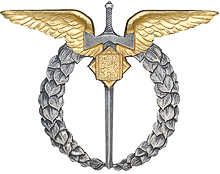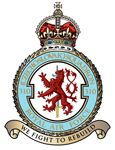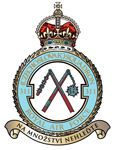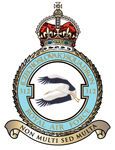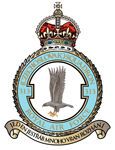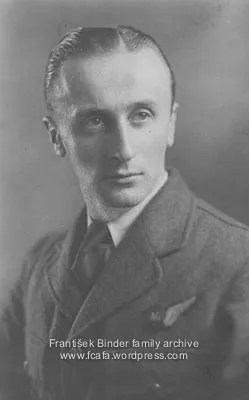
František Binder
…………………….* 22. 10. 1914.
…………………….† 04. 03. 1942.
František a jeho rodina
František and his family
František Binder se narodil 22. října 1914 v Hojné Vodě. Nyní v jihočeském kraji České republiky blízko rakouské hranice, ale v roce 1914 to bylo v okrese Kaplice Rakouska-Uherska. Byl druhým dítětem svého otce Františka Antona Bindera, narozeného 20. května 1882, kameníka, a matky Anny rozené Bergerové, porodní báby narozené 6. června 1889. Jejich první dítě, dívka Marie, se narodila v roce 1913. Začala první světová válka a v roce 1915 narukoval Františkův otec. Jeho pluk byl poslán na frontu.
František Binder was born on October 22, 1914 in Hojná Voda. Now in the South Bohemia region of the Czech Republic near the Austrian border but in 1914 it was in the Kaplice district of the Austro-Hungarian Empire. He was the second child of his father, Franz Anton Binder, born 20 May 1882, a stone mason, and mother Anna, née Berger, born 6 June 1889, a midwife. Their first child, a daughter named Marie, had been born in 1913. World War I had started and in 1915 his father was called up had to join the army and his regiment was sent to the front line.
Během toho období se František Anton Binder skamarádil s jiným vojákem z téhož okresu – Václavem Jeníkem z Kolodějí nad Lužnicí. Václav se stal po vychození školy pekařským učněm. Ti dva spolu uzavřeli dohodu, že jestliže by jeden z nich válku nepřežil,druhý by po návratu z války osobně navštívil rodinu toho druhého, aby jim řekl o smrti jejich manžela a rovněž by pokračoval ve finančním podporování rodiny. Bohužel František Binder byl v roce 1918 zabit a Václav Jeník, toho času legionář na italské frontě, se vrátil domů, aby dodržel slib daný svému příteli.
During this time he became good friends with another soldier Václav Jeník of Kolodějí nad Lužnicí who also was from the same region. Václav was born 8 September 1915 ?? and on leaving school had become an apprentice baker. The two made a pact that should one of them not survive the war, the other on returning home from the war, would personally visit the others family to advise them of the death of their husband and would also continue to support the family financially. Unfortunately, in 1918, Franz Binder was killed and Václav Jeník, at the time a legionnaire on Italian front returned home to honour the pact he had made with his friend.

František Binder, 1932
Václav Jeník našel zaměstnání u Finanční stráže v nedalekém Vyšším Brodě a u Binderovy rodiny bydlel. Brzy potom se Václav oženil s Annou Binderovou, vdovou po svém příteli, a malého Františka a jeho sestru Marii adoptoval. Když František vychodil základní školu,Václav mu dodal odvahu k nástupu do učení u drogisty v Praze, aby se naučil řemeslu. V roce 1935 byl František povolán na dva roky na vojnu. Byl u 1. pěchotního pluku „Mistr Jan Hus“v Kaplici u Českých Budějovic v českém okrese Československa.
Václav found employment as a border guard at nearby Vyšší Brod and stayed with the Binder family. Soon after, Václav married Anna Binder, his friends widow and adopted young František and his sister Marie. When František completed his schooling, Václav encouraged him to accept an apprenticeship at a chemists, in Prague, so that he would learn a trade. In 1935, František was required to do his 2 years statutory Military Service. He joined the 1st Infantry Regiment , “Mistr Jan Hus”, who were based at Kaplice, near České Budějovice in the Bohemia region of Czechoslovakia.
Po skončení vojenské základní služby v roce 1937 se František vrátil domů do Hojné Vody a Václav ho přemlouvá, aby společně s ním sloužil u Finanční stráže.
On completing his Military Service in 1937, František returned home to Hojná Voda where he was encouraged, by Václav, to join him and become a border guard.
František uposlechl radu svého otčíma a stal se členem Finanční stráže. Na jedné z dovolenek se poznal s Marií Hokrovou. Brzy se zasnoubili a začali bydlet v Olešnici u Trhových Svin. Služba u Finanční stráže vyžadovala, aby její členové byli svobodní, což znamenalo, že František a Marie museli jejich plány na svatbu odložit.
František followed his step-fathers guidance and joined the border guards. During one of his leaves, František met Marie Hokrová. They soon became engaged and began to live together at Olešnice nr Trhové Sviny. Service as a border guard had some strict requirements, one of those was that the guards were single which meant that František and Marie had to postpone their wedding plans.
Finanční stráž a Stráž obrany státu
The Border Guards
V roce 1937 byla zřízena celnice a služebna Finanční stráže v Kaplických Chalupách Kappelner Waldhauser, /které podléhalo Inspektorátu Finanční stráže Vyšší Brod/. Václav Jeník byl jmenován jeho správcem a vrchním úředníkem, a navrhl, aby s ním zde sloužil František Binder.
In 1937 a Border Guard and Customs office was opened in Kaplické Chalupy / Kapellner Waldhäuser (which was part of the Border Guard Inspectorate of the Vyšší Brod district). Václav Jeník was appointed administrator and Chief Officer of that office and he suggested that František Binder joined him there.

František Binder, 1937
21.května 1938 František Binder požádal o vstup do Stráže obrany státu SOS, jenž doplňovaly činnost Finanční stráže na státní hranici.
On 21 May 1938, František Binder requested to join the Stráž obrany státu, the State Defense Guard unit that complemented the activities of the border guard on the countries border.
V roce 1938 několikrát na celnici v Kaplických Chalupách zaútočil Sudetoněmecký Freikorps, známý také jako Ordneři. Dobrovolnická polovojenská organizace Sudetských Němců založená v roce 1938, aby destabilizovala československé pohraničí ozbrojenými útoky, sabotážemi a diverzními akcemi.
In 1938, the Customs office at Kaplické Chalupy was attacked several times by the Sudetoněmecký Freikorps, also known as Ordneři. A volunteer paramilitary Sudeten German organisation founded in 1938 to destabilise the the Czechoslovak border areas by armed attacks, sabotage and diversion.
Boje v pohraničí 1938
The fighting in the border region in 1938
Sudetoněmecký Freikorps poprvé zaútočil na celnici v Kaplických Chalupách v noci z 20. na 21. září 1938. Naštěstí byli díky včasným protiopatřením Finanční stráže lehce zraněni pouze dva vojáci. Alexandr Farkaš od 45. pěchotního pluku a do oka a Václav Prášek do víčka.
The Sudetoněmecký Freikorps first attacked the Customs office at Kaplické Chalupy on the night of 20/21 September 1938. Fortunately, due to timely countermeasures by the Border Guards, only two soldiers were slightly injured. An eye injury to Alexander Farkaš from the 45th Infantry Regiment and the Václav Prášek on his eyelid.
Toho večera se vrchní důstojník Jeník pokusil rozsvítil v budově celnice světlo, ale zjistil, že elektřina byla odpojena. Všiml si, že dokonce i světla na rakouské celnici v Gugelwaldu na druhé straně hranice jsou ponořená do tmy. Vytušil okamžité nebezpečí a poslal spojku k veliteli Finanční stráže, jehož muži byli umístěni nedaleko. Na celnici nechali pouze tři muže. Vojín František Binder vyzbrojený lehkým kulometem Zb 26 ležel v obranném postavení za hraniční závorou.
That evening Chief Officer Jeník had tried to switch on the lights in the Customs office but found that the electricity had been turned off. He noticed that even the lights at the Customs office on the Austrian side at Gugelwald was also shrouded in darkness. Sensing immediate danger he despatched a courier to the Commander of the Border Guards who were based nearby. This left only three men at the Custome post. Pvt František Binder, armed with a Zb26 light machine gun took a defensive position behind the barrier gate of the border.
Asi deset minut po půlnoci zaútočilo za tří stran na celnici asi osmdesát členů Freikorpsu. První skupina přicházela přes les, ale když ji uviděl strážný, okamžitě na ně zahájil palbu a skupina se rozprchla.
About ten minutes past midnight about eighty Freikorps members attacked the Customs post from three sides. The first group came through the forest but were seen by the border guard who immediately opened fire, causing the group to scatter.
Útok druhé skupiny byl nebezpečnější. Postupovala od blízké Stiftovy pily a k utajení svého přiblížení k budově celnice použila lezení příkopem. Tak se členové Freikorps dostali k celnici dostatečně blízko, aby mohli hodit ruční granáty a střílet ze svých samopalů. Celý útok byl z rakouské strany hranice podporován vojáky německého Wehrmachtu, kteří stříleli ze dvou těžkých kulometů. Jeden pálil asi z pěti set metrů jihovýchodně od celnice a druhý z okna Baumana hostince v Gugelwaldu.
The attack by the secound group was more dangerous, they advanced from the direction of the nearby Stift sawmill, and by using a ditch for concealment were able to get close enough to the Customs house to be able to throw hand-grenades and fire their machine guns. The entire attack was supported on the Austrian side by soldiers of the Wehrnacht who were firing two heavy machine guns. One machine gun was firing about 500 mtrs south-east of the Customs post, whilst the other was fired from the window of the Baumann’s public house in Gugelwald.

František Binder u Finanční stráže, 1938.
František Binder, border guard, 1938
Vojín František Binder náporu útoku odolal. Ze svého kulometu vystřílel na útočníky čtyři zásobníky a teprve při palbě z pátého se opakované útoky Freikorpsu zhroutily. Útočníci odtáhli přes hranici do Rakouska několik těžce zraněných soukmenovců. Po útoku byl klid narušován sporadickou německou palbou. Bylo vystříleno 108 nábojnic, které rozbily 68 okenních tabulek, hlavní vchod budovy celnice byl poznamenán stopami boje od kulek i jiných šrámy z boje.
Private František Binder resisted the onslaught of the attack. He emptied four magazines from his machine gun against the attackers and only during firing of his fifth magazine did the repeated attacks by the Freikorp collapse. The Freikorp attackers dragging several seriosly wounded comrades over the border into Austria. After the attacks the peace was broken by sporadic German gunfire with 108 shots being fired resulting in 68 panes of glass being shattered, the main entrance to the Customs post being badly marked by bulletts along with other battle scars left on the building.
Brzy ale došlo k dalším incidentům. V sobotu 24. září 1938 si šel vojín František Binder koupit cigarety pro celou jednotku. U Stiftovy pily na něho zaútočil granátem neznámý útočník. František měl štěstí a v rozpoutané přestřelce rovněž použil ruční granáty a útok odrazil.
But soon there were other incidents. On Saturday 24 September 1938, Private First Class František Binder went to buy cigarettes for the border patrol unit. Near the Stift sawmill he was attacked by an unknown assailant who used a hand grenade. František was lucky and in the ensuing fire-fight, also using grenades, he repelled off the attack.
Následujícího dne zaútočilo asi dvě sta ozbrojených členů Freikorpsu,opět podporovaných palbou těžkých kulometů z území Rakouska. V divoké přestřelce byla hrstka českých pohraničníků donucena celnici opustit a ustoupit. Nikdo z nich nebyl při útoku zraněn. ale celnice byla úplně zničená a zůstala v rukou nacistů.
The following day attacked about 200 armed Freikorps, supported again by several heavy machine guns firing from Austrian territory. It was a fierce shoot-out and the handful of Czech border guards were forced to abandon the Customs post and retreat. None of the border guards were injured in this attack, but the Customs office was totally destroyed and remained in the hands of the Nazis.
Členem odboje
A member of the resistance
Po Mnichovské dohodě, kdy byly 30. září české a moravské oblasti Sudet odstoupeny nacistickému Německu, se František rozhodl využít svoje znalosti několika rakousko/německých místních dialektů. Z šesti set obyvatel Hojné Vody bylo pouze šestnáct české národnosti. Takhle maskován František chodil do hospod v pohraničí a poslouchal tam členy Freikorps, jak mluví o svých plánech. Úspěšně se do Freikorps infiltroval a získal informace o činnostech, které plánovali. Během tohoto období plného zvratů se Františkovi a jeho snoubence Marii 19. ledna 1939 narodila dcera Květa. Když Německo obsadilo 15. března 1939 zbytek Čech a Moravy, stal se František členem odbojové organizace Obrana národa a pokračoval v získávání informací.
Following the Munich Agreement of 30 Sept 1938, when the Sudeten regions of Czechoslovakia were ceded to Nazi Germany, František decided to utilise his knowledge of the several Austrian/German dialects in his region. The village of Hojná Voda, had about 600 inhabitants, of which only 16 were of Czech nationality. In this guise Frantisek would go into the pubs in the border areas and listen to the Freikorps discussing their plans. He successfully managed to infiltrate into the Freikorps to obtain intelligence about activities they were planning. During this turbulent time a daughter, Květa was born, on 19 January 1939, to František and Marie who was now his fiancee. When Germany occupied the rest of Bohemia and Moravia on 15 March 1939, František joined the underground Czechoslovak organisation ‘Obrana národa‘ – Defense of the Nation – and continued with his intelligence gathering activities.
Freikorps bohužel zjistil, že má mezi sebou zrádce a vypsali odměnu padesáti tisíc říšských marek za jeho jméno. Ale bez znalosti jména hledalo Gestapo špióna marně.
Unfortunately the Freikorps discovered that they had been infiltrated and they offered a reward of 50,000 Reichsmarks for the name of the spy. But without a name the Gestapo looked in vain for this infiltrator.
Útěk před Gestapem
Escape from the Gestapo
František se začal připravovat na odchod svůj a rodiny do bezpečí. V září 1939 odjíždí do Prahy spojka, aby zde vyzvedla falešné doklady a průvodní dopisy k útěku do Ruska. Na zpáteční cestě byl kurýr prozrazen a zatčen Gestapem, vyslýchán a nakonec zastřelen. Prozrazení kurýra způsobilo, že František se narychlo snaží zahladit stopy. Tajně se z pobytu v Olešnici odhlásil a šel bydlet do vzdáleného opuštěného domu a přerušil kontakt s kýmkoliv z rodiny.29.září se krátce rozloučil se svojí snoubenkou Marií a malou dcerkou Květou a pak odešel, aby nebyl dopaden, i když s vědomím, že bude čelit jisté smrti. 3. října František z opuštěného domu odešel a jel na kole do Hodonína, kam přijel v poledne 5. října. Následujícího dne napsal ze své vlasti poslední dopis. Den poté František a tři společníci, z nichž dva byli vojáci, úspěšně překročili slovenskou hranici – na jejich cestě na západ hranici první. 8.října přijeli do Nitry na Slovensku, odkud František poslal domů první pohlednici,než pokračoval v cestě. Dne následujícího dorazili do Budapešti,odkud poslal domů další pohlednici.
He began to prepare to escape with his family to safety. In September 1939 a courier went covertly to Prague to collect false documents and covering letters for an escape to Russia. On the return journey, the courier was betrayed to the Gestapo who arrested him, interrogated him and eventually shot him. The betrayal of the courier caused František to hastily try to cover his tracks. He discretely left his home in Olešnice and went to live in a remote abandoned house and had no contact with any of his family. On 29 September he had a brief farewell meeting with his fiancee Marie and their baby daughter Květa and then he left before he was captured knowing that he would face the certainty of death. On 3 October he left the abandoned house and cycled to Hodonin where he arrived at noon on 5 October. The following day he wrote his last letter from his homeland. The next day František, with three companions, two of whom were military personnel, successfully crossed to border into Slovakia – their first border crossing on their route to the west. On 8 October they arrived at Nitra, Slovakia from where he sent his first postcard home before carrying on with their journey. By the following day they had reached Budapest, Hungary from where he wrote another postcard home.
Brzy poté byl maďarskými úřady zadržen a uvězněn. Podařilo se mu utéct až do Rumunska, kde ho opět zadrželi a uvěznili. Po nějaké době byl František propuštěn a přes Jugoslávii přijel 4. ledna 1940 do Soluně v Řecku. Po čtyřech dnech se dostal do Istanbulu, odkud poslal svou poslední pohlednici domů.
Shortly after he was detained in Hungary by the authorities and held in prison. He managed to escape and reached Romania where again he was detained and imprisoned. After some time he was released and traveled to Yugoslavia from where he reached Thessaloniki, Greece on 4 January 1940. Four days later he had reached Istanbul, Turkey from where he sent his last postcard home.

Nitra, Slovensko.
Nitra, Slovakia.

Budapešť, Maďarsko.
Budapest, Hungary.

Thessaloniki, Řecko.
Thessaloniki, Greece.

Istanbul, Turecko.
Istanbul, Turkey.
V Turecku se František s dalšími českými uprchlíky nalodil na loď do Bejrútu. Odsud do Marseille ve Francii, kam připlul 21. ledna 1940. Ve Francii byl zařazen k 3. pěšímu pluku, který se toho času připravoval k odchodu na frontu. Rychlý sled událostí mající za následek kapitulaci Francie zabránil jeho jednotce v odchodu do boje. Místo toho František 25. června 1940 odplul z Marseille do Anglie, kde 15. července podepsal závazek ke službě v Dobrovolnické záloze Královského vojenského letectva.
From Turkey, František with other Czech escapees, boarded a ship which sailed to Beiruit and from there sailed to Marseille, France. He arrived at Marseille on 21 January 1940. In France he was posted to the 3rd Infantry Regiment who at that time were preparing to go to the front line. The rapid rate to France’s capitulation prevented his unit going into combat and instead, on 25 June 1940, he sailed from Marseille to England where, on 15 July 1940, he was recruited into the RAF Volunteer Reserve.
Královské vojenské letectvo – RAF
Royal Air Force

Nejprve byl František Binder poslán do Československé náhradní jednotky – depa v Cosfordu k základnímu výcviku RAF. Po jeho ukončení byl vybrán k výcviku na leteckého montéra. Po jeho úspěšném absolvování byl poslán k československé stíhací 312. peruti jako montér Hurricanů, se kterými létali. Brzy byl zklamaný se svou pasivní rolí a hledal aktivnější ve svém válečném úsilí.
Initially he was transferred to the Czechoslovak Depot at Cosford for his RAF basic training. On completion was selected for a training course to become an aircraft fitter. Successfully completing this training he was posted to 312 Czechoslovak Sqn as a fitter to the Hurricanes they were using. He soon became dissatisfied with this passive role and sought to have a more active role in the war effort.
Podal si žádost o zažazení k leteckému výcviku a 3. května 1941 ho poslali do West Freugh ve Skotsku ke 4. Škole bombardování a střelby. Po ukončení výcviku byl František 23. června 1941 přidělen k čs. 311. bombardovací peruti do East Wreathamu v hrabství Norfolk, kde se stal palubním střelcem baombardéru Wellington, s nimiž peruť létala. 6. července byl povýšen na četaře.
He applied for flight training and on 3 May 1941 was sent for Air Gunner training at No. 4 Air Bombing and Gunnery School, West Freugh, Scotland. He successfully passed this training course and on 23 June 1941 was posted to 311 Czechoslovak Bomber Squadron, based at East Wretham, Norfolk where he became an air-gunner on the Wellington bombers they flew. On 6 July 1941, he was promoted to the rank of Sergeant.
17.října 1941, po nešťastné události z 5. září, kdy šlo o krádež dvou litrů benzínu, stanuli jak František Binder, tak četař Adolf Pegřimek před vojenským soudem a byli degradováni na vojíny nováčky.Binder byl navíc přeřazen z osádky letounu k pozemnímu personálu a šel do vězení na čtyři týdny. Četař Pegřimek byl napomenut podobným způsobem a byl poslán do basy na pět týdnů. Událost s benzínem nebyla na základnách tak neobvyklá, ale zde měli Binder s Pegřimkem smůlu, že je chytili a vyšší velení RAF rozhodlo je exemplárně potrestat, aby to ostatní letce odradilo.
On 17 October 1941, following an unfortunate incident, on 5 September 1941, involving the pilfering of 2 litres of petrol both Binder and Sgt Adolf Pegřímek were court-martialled and demoted in rank to AC2. Binder was also removed from aircrew to ground crew and subjected to 28 days detention. Sgt Pegřímek was similarly reprimanded but received 35 days detention. The incident involving the petrol was not that uncommon on airbases, but here Binder and Pegřímka had the misfortune to be caught and the RAF Higher Command decided to proceed with a exemplary case to deter other airmen.
Po této nešťastnou událostí se František soustředil na obnovení své kariéry v RAF a 24. prosince 1941 mu byla hodnost četaře vrácena. 28. prosince letěl na svůj první operační let jako zadní střelec stroje KX-I pilotovaného nad Wilhelmshaven rotným Františkem Dostálem. Odstartoval z East Wreathamu v 17.35 a přistál v 23.05.
With this unfortunate incident behind him focused on rebuilding his RAF career and on 24 December 1941, he was returned to the rank of Sgt and also aircrew. On 28 December he flew his first operational mission on a raid to Wilhelmshaven as rear-gunner of KX-I Flown by Sgt František Dostal. Take-off was at 17:35 and landing back at East Wretham at 23:05.
Další lety následovaly : v lednu 1942 – jedenáctého na Brest trvající 5 hodin 34 minut, dvacátého prvního byla akce kvůli poruše přístrojů let na Brémy přerušena a Wellington se vrátil po 53 minutách. V únoru – desátého na Brest, dvanáctého denní útok na německé bitevní lodi Scharnhorst a Gneisenau v Severním moři u Amsterodamu, čtrnáctého na Mannheim 5 hodin 23 minut a dvacátého druhého na Wilhelmshaven 2 hodiny 13 minut kvůli předčasnému návratu způsobenému problémem s vrtulí a 3. března 1942 na Emden.
Other bombing missions followed: in January 1942; 11th to Brest 5hrs 34 min, 21st 53 min an aborted, due to instrument failure, raid on Bremen. In February; 10th to Brest, 12th a daylight attack on the German battleships Scharnhorst and Gneisenau off Amsterdam, 14th 5hrs 43 min to Mannheim, and 22nd, 2hrs 13min to Wilmshaven, but aborted due to airscrew problem and on 3rd March to Emden.
Podle citace Divizního generála Karla Janouška, vyššího čs. důstojníka v RAF byla reputace Františka Bindera taková, že byl neúnavným, nadšeným a odvážným letcem. Jako zadní střelec měl na kontě celkem devět operačních letů s nalétanými 39 hodinami a 24 minut až do 4. března 1942, kdy se stal obětí své profese : zabit v akci.
Soon, his reputation, according to his citation from Air Vice-Marshall Karel Janoušek, the Senior Czechoslovak Officer in the RAF, was that he was a tireless, enthusiastic and courageous airman. He flew a total of 9 operational flights, totalling 39 hrs 24 min, as a rear-gunner until 4 March 1942 when he became a victim of his profession: killed in action.
Poslední bitva
The Last Battle
Při návratu zpět po náletu na německý přístav Emden byl Wellington Z1147 KX-G jako George pilotovaný rotným Vladimírem Párou deset minut po deváté večer nad cílem ve výšce 4 800 metrů napaden nočním stíhačem Messerschmitt 110 pilotovaný velitelem 1. noční stíhací perutě z holanského Venlo majorem Wernerem Streibem.
On the return flight, after a raid on the German port of Emden, his aircraft, a Wellington bomber KX-G, Z1147 George’, flown by Sgt Vladimír Pára was attacked at 21:10 at an altitude of 14,500 ft, over the target by a Luftwaffe Me110 night-fighter flown by Major Werner Streib, Commander of 1 Nachtjagdgeschwader at Venlo, Holland.
Rotný Pára okamžitě uvolnil bomby a provedl úhybný manévr a pokusil se nočního stíhače setřást. Me 110, zřejmě naváděný pozemní stanicí Luftwaffe, hledal Wellington dobrých dvacet minut, ale protože bombardér pořád měnil svou výšku, měl Me 110 potíže ho lokalizovat. Během této doby zadní střelec František stíhačku nespouštěl z očí.
Sgt Pára immediately jettisoned his bomb load and took evasive action to try and loose the nightfighter. The Me110, apparently guided from the ground, searched for the the Wellington for some twenty minutes but because the bomber kept altering its height, had trouble locating it. During this time František, in the bombers rear gun-turrett kept the night-fighter under observation.
Druhý pilot rotný Oldřich Soukup při výslechu po návratu z akce vypověděl, že „Němec po nás šel dlouho, asi dvacet minut. Jednou, když letěl směrem k nám, po něm přední střelec Ján Šimko začal pálit. Stíhačka pak zaútočila zezadu, ale František Binder na ni dvakrát vystřelil.
The second pilot Sgt Oldřich Soukup later stated in his de-brief questioning that “The German followed us for a long time, about twenty minutes. Once, when he flew towards us, Jan Šimko, the front gunner, began shooting at him. He then attacked from behind, but František Binder fired twice at him.
V kabině se rozsvítilo červené světlo, signál, že zadní střelec je zraněný, slyšeli jsme střelbu z Binderových kulometů. Současně jsme pocítili útok noční stíhačky. Naštěstí jsme viděli velký mrak, do kterého Vladimír Pára vletěl, aby se v něm skryl. Změnili jsme kurs. Šel jsem s navigátorem do zadní části letadla a našli jsme Bindera v bezvědomí. Krev mu tekla jak z hlavy, tak i břicha. Snažili jsme se ho dovléct na skládací lůžko pro zraněné a píchli jsme mu morfium. Kapitán mě poslal do zadní věže, ale bylo to k ničemu, protože ta byla úplně zničená zásahy z kanónu Messerschmittu 110.“
The red light, in the cockpit, lit up, indicating that the rear gunner was wounded, we heard the shots from Binder’s Browning machine guns. At the same time, we also felt the attack from the night fighter. Fortunately, we saw a large cloud into which Vladimír Pára flew into to hide. We changed course, I went with the navigator to look into the back of the aircraft and we found that Binder was an unconscious. Blood flowed from both, his head and the abdomen. We struggled to get him into the body of the airplane onto the folding bed. I gave him a morphine injection. The Captain sent me to the back of the rear gun turret, but it was useless, it had been completely destroyed by the Me110’s cannons shells”.
V East Wreathamu, jejich domovské základně, bylo minutu po půlnoci slyšet zvuk motorů blížícího se Wellingtonu. Pozemní kontrola už byla v kontaktu s KX-G k přistání. Nyní další problém – pilot rotný Vladimír Pára nebyl schopen vysunout podvozek letadla. Na letišti byly zalarmovány pohotovostní vozidla a kvůli přistání na břicho jsou připraveni hasiči, sanitka i doktor.
At East Wretham, their home airfield, at 00:01 the sound of the Wellington’s engines was heard approaching and Flying Control was already in contact with KX-G ‘ for the landing. Now another problem; the pilot Sgt Vladimír Pára was unable to lower the aircraft’s undercarriage. At the airfield, emergency vehicles were alerted and the fire tender, ambulance, and doctor prepared for the emergency landing.
Silueta dvoumotoráku se konečně objevila ve tmě a desítky mužů na základně s úzkostí očekávaly nouzové přistání. Břicho Welingtonu se dotklo travnaté dráhy letiště při téměř nulové rychlosti, levé křídlo zachytilo o zem, což letadlo otočilo kolem své osy, než se zastavilo úplně. Desítky čekajících letců spěchaly k letadlu, které naštěstí nechytlo.
In the darkness, the silhouette of the twin-engined finally appeared and dozens of airmen at the air-base awaited, in apprehension, of the emergency landing. At almost stalling speed, the belly of the Wellington touched down on the grass airstrip, the left wing brushed along the ground causing the aircraft to spin around until it finally came to a stop. Dozens of watching airmen rushed to the aircraft which fortunately did not catch fire.
Rotný Pára odstartoval 3.března v 18.52 a dokázal nouzově přistát v East Wreathamu s těžce poškozeným Wellingtonem sedm minut po půlnoci 4. března.
Sgt Pára had starting his mission at 18:52 on 3 March 1942 and had managed to land the heavily damaged Wellington at East Wretham at 00:07.
Letci pomáhali s vynesením svého zraněného člena posádky z letadla, ale přes všechno jejich úsilí a okamžitou zdravotnickou péči bylo příliš pozdě. Zadní střelec Františel Binder zemřel už předtím na palubě letadla.
The airmen assisted in getting their wounded comrade from the aircraft, but despite all their effort and immediate medical assistance it was too late, the rear-gunner Sgt František Binder had already died on-board the aircraft.
Byl pohřben ráno 7. března 1942 na hřbitově St Ethelbert v East Wreathamu, hrob č. 21.
He was buried on the morning of 7 March 1942 in grave 21 St Ethelbert’s church, East Wretham.

Vyznamenání:
Decorations:
Československý válečný kříž 1939 „in memoriam“ /17. července 1946/
Czechoslovak War Cross 1939 “in memoriam” (July 17, 1946)
Československá medaile Za chabrost /17. února 1947/
Czechoslovak Medal for Bravery (February 17, 1947)
Ocenění:
Recognition:
Prvního února 1947 byl posmrtně povýšen do hodnosti štábního rotmistra letectva v záloze Československého letectva.
On 1 February 1947, he was posthumously promoted to the rank of Staff Sergeant in the Czechoslovak Air Force reservists.
Po „sametové“ revoluci byl 29. května 1991 povýšen na podplukovníka letectva v záloze.
Following the ‘Velvet Revolution’ of 1989, on 29 May 1991 he was promoted to the rank of Lieutenant Colonel in the Czechoslovak Air Force reservists.
Při ceremoniálu rehabilitace, jenž konal 13. září 1991 v Praze, byli čs. letci, kteří za druhé světové války sloužili v RAF, postkomunistickým Československem morálně a politicky rehabilitováni Tito letci byli finančně odškodněni a od vlasti se jim dostalo uznání za boj k osvobození své země od nacistického Německa. Při tomto ceremoniálu bylo jméno Františka Bindera slavnostně přečteno.
At the Rehabilitation Ceremony, held in Prague on 13 September 1991, the Czechoslovak airmen who had served in the RAF in WW2 were morally and politically rehabilitated by post-Communist Czechoslovakia. These airmen were finally recognised and acknowledged by their country for fighting for the liberation of their homeland from Nazi Germany. At this Ceremony František Binder was honourably mentioned.
V listopadu 2017 bylo jeho jméno připomenuto mezi dalšími 2500 československými muži a ženami, kteží sloužili v průběhu druhé světové války v RAF, na pomníku okřídleného lva na pražském Klárově.
In November 2017, his name, along with the names of some 2500 other Czechoslovak men and women who had served in the RAF during WW2, was unveiled at the Winged Lion Monument at Klárov, Prague.

Pavel Hamberger
Toto je jediná dochovaná vzpomínka na mého dědečka a zároveň poděkování všem, kteří se na projektu této biografie podíleli.
This is the only preserved the memory of my grandfather and also thanks to all who contributed their assistance with this biography”
Za Binderovo rodinu; jeho vnuk Pavel, dcera Květa a neteř Elizabeta. Děkujeme.
From the Binder’s family; his grandson Pavel, daughter Květa and niece Elizabeta. Thank you all.
< Article last updated: 18.01.2019.

